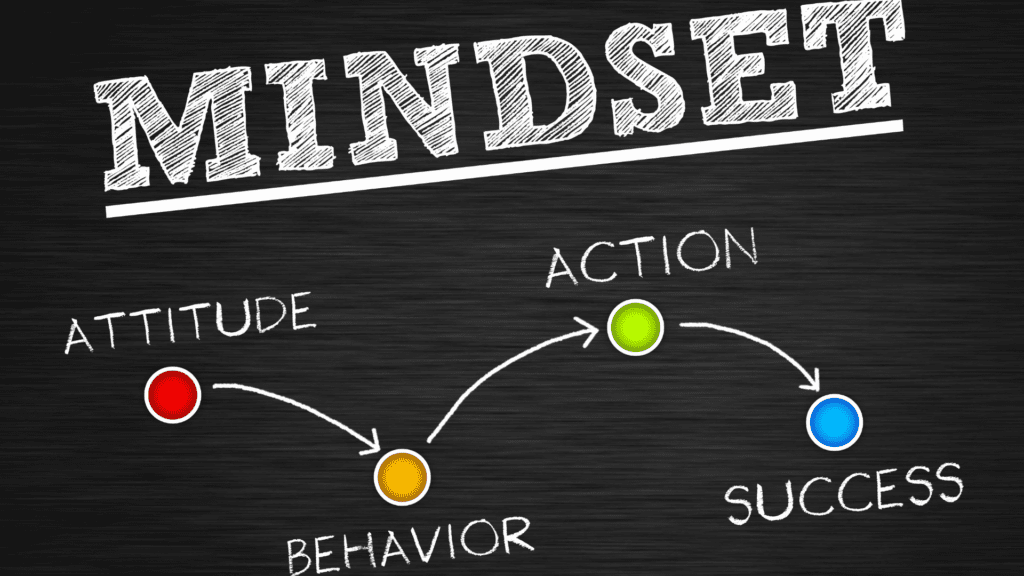What is a Success-Focused Mindset and Why Does It Matter?
A success-focused mindset is more than just positive thinking or a commitment to hard work—it’s a deliberate approach to aligning your thoughts, habits, and behaviors with the way your brain naturally functions. At its core, this mindset is about harnessing the power of neuroscience to optimize how you think, act, and respond to challenges. It involves cultivating self-awareness, prioritizing high-impact activities, setting boundaries, and consistently showing up for yourself, even when motivation wanes.
Neuroscience has revealed that your brain is not fixed; it is highly adaptable through a process called neuroplasticity. This means that with intentional practices, you can rewire your neural pathways to support resilience, focus, and goal achievement. A success-focused mindset leverages this adaptability, helping you break free from limiting beliefs and develop habits that propel you toward personal and professional growth.
Developing a success mindset requires intentional effort and strategic practices that align with how your brain is wired to learn, adapt, and grow.
Why is a Success-Focused Mindset Important?
In today’s fast-paced world, distractions are everywhere—social media notifications, endless emails, and competing priorities can easily derail your focus. Without a success-focused mindset, it’s easy to fall into a cycle of reacting to external demands rather than proactively pursuing your goals. This mindset acts as a mental framework that keeps you grounded in what truly matters. It empowers you to make intentional decisions, prioritize effectively, and persevere through obstacles.
Moreover, neuroscience shows that adopting a success-focused mindset has tangible benefits for your brain. Practices like mindfulness, goal-setting, and boundary-setting activate regions such as the prefrontal cortex, which governs decision-making and emotional regulation. Over time, these practices strengthen neural connections associated with productivity and resilience while reducing activation in areas linked to stress and fear, such as the amygdala.
What Does It Mean to Have a Success-Focused Mindset?
To truly embody a success-focused mindset means committing to growth-oriented thinking and intentional action. It’s about understanding that success isn’t achieved through sheer willpower alone but through strategic alignment between your goals and how your brain operates. This mindset prioritizes clarity over chaos—helping you focus on what drives results while letting go of distractions that drain your energy.
A success-focused mindset also emphasizes consistency over perfection. Neuroscience teaches us that small, repeated actions compound over time to create lasting change in the brain. Whether it’s showing up for daily habits or learning to say “no” to non-essential commitments, this mindset fosters discipline and resilience.

Unlocking Your Full Potential
When you adopt a success-focused mindset, you unlock your brain’s full potential. You become more self-aware of what drives your behaviors and how to overcome mental roadblocks. You learn to prioritize tasks that align with your long-term vision while letting go of activities that add little value. Most importantly, you develop the mental resilience needed to navigate setbacks without losing sight of your goals.
In this blog, we’ll explore six actionable steps to cultivate a success-focused mindset using insights from neuroscience. These steps will help you rewire your brain for peak performance and empower you to achieve lasting success in every area of your life.
This revised introduction provides a comprehensive definition of what a success-focused mindset is while emphasizing its importance through neuroscience-backed insights.

Step 1: Learn Self-Awareness (Your Brain’s Secret Weapon)
Self-awareness is the foundation of a success-focused mindset. It allows you to recognize your strengths, weaknesses, and thought patterns, enabling you to make intentional decisions. Neuroscience highlights the role of the prefrontal cortex, often referred to as the brain’s executive center, in enhancing self-awareness and emotional regulation.
Neuroscience Insight:
- The default mode network (DMN), a network of brain regions active during self-reflection, strengthens with mindfulness practices. Research shows that activating the DMN helps you identify limiting beliefs and improve decision-making.
Action Steps:
- Spend 10 minutes daily journaling your thoughts and identifying emotional triggers.
- Practice mindfulness meditation to enhance self-awareness. Apps like Headspace or Calm can be great tools for beginners.
- Reflect on your successes and failures weekly to understand what drives your behavior.
When you become more self-aware, you can break free from autopilot mode and start making choices that align with your goals.
Step 2: Define Your Non-Negotiables (Protect Your Cognitive Bandwidth)
Your brain has limited cognitive resources each day, meaning every decision you make uses up mental energy. Defining non-negotiables—your core values and boundaries—reduces decision fatigue and ensures that your energy is spent on what truly matters.
Neuroscience Insight:
- The anterior cingulate cortex (ACC), responsible for managing conflict resolution in the brain, becomes less active when clear boundaries are set. This frees up mental bandwidth for high-priority tasks.
Action Steps:
- Identify three non-negotiables that align with your long-term goals (e.g., “I will exercise for 30 minutes daily” or “I won’t check emails after 8 PM”).
- Use time-blocking techniques to schedule these priorities into your day.
- Communicate your boundaries clearly with colleagues and loved ones to minimize interruptions or conflicts.
By defining non-negotiables, you create a framework that protects your mental energy and keeps you focused on achieving a success-focused mindset.

Step 3: Master the 80/20 Rule (Leverage Neuro-Efficiency)
The Pareto Principle, or the 80/20 Rule, states that 80% of results come from 20% of efforts. Neuroscience supports this principle by showing how focusing on high-impact tasks aligns with your brain’s dopamine-driven reward system, reinforcing productive habits over time. Understanding the anatomy of success step by step allows you to break down complex goals into actionable behaviors, ensuring consistent progress toward a success-focused mindset.
Neuroscience Insight:
- Dopamine is released when you complete meaningful tasks, creating a “success loop” that motivates repetition. By prioritizing tasks with the highest impact, you maximize dopamine release and train your brain to focus on what matters most.
Action Steps:
- Audit your weekly tasks: Identify low-impact activities that can be eliminated or delegated.
- Use tools like Eisenhower Matrix to categorize tasks based on urgency and importance.
- Focus on activities that align with long-term goals rather than short-term distractions.
When you master the 80/20 Rule, you optimize your brain’s efficiency and create momentum toward achieving a success-focused mindset.
Step 4: Get Comfortable Saying No (Guard Your Amygdala)
Saying “yes” to every opportunity can overwhelm your schedule and trigger stress responses in the amygdala, the part of the brain responsible for fear and emotional processing. Learning to say “no” strategically protects your mental health and ensures that you prioritize what truly aligns with your goals.
Neuroscience Insight:
- Chronic stress caused by overcommitment shrinks the hippocampus, impairing memory and learning. Conversely, reducing stress through boundary-setting enhances cognitive performance.
Action Steps:
- Practice polite but firm scripts for saying no: “I appreciate the offer, but I’m focusing on existing commitments right now.”
- Use scheduling tools like Google Calendar or Reclaim.ai to block out time for focused work, making it easier to say no to distractions.
- Reflect on past commitments that drained your energy unnecessarily—use these lessons as motivation to prioritize yourself.
Saying no isn’t selfish—it’s an essential skill for maintaining a success-focused mindset.

Step 5: Surround Yourself With the Right People (Mirror Neurons at Work)
Your brain’s mirror neurons are designed to mimic the behaviors and emotions of those around you. This means that surrounding yourself with growth-oriented individuals who inspire positivity can prime your mindset for success.
Neuroscience Insight:
- Positive social interactions boost oxytocin, often called the “bonding hormone,” which enhances trust and collaboration. Additionally, being around motivated individuals activates mirror neurons that reinforce productive behaviors.
Action Steps:
- Join mastermind groups or online communities focused on personal development (e.g., Meetup or LinkedIn groups).
- Limit time spent with individuals who drain your energy or discourage growth.
- Seek out mentors who embody the traits you want to develop in yourself.
When you surround yourself with people who uplift and challenge you, their energy becomes contagious—and fuels your success-focused mindset.
Step 6: Show Up, Even When You Don’t Want To (Neuroplasticity in Action)
Consistency is key when building a success-focused mindset because it rewires neural pathways over time through neuroplasticity, the brain’s ability to adapt based on repeated behaviors. By incorporating mindset strategies for success, such as self-awareness and consistent action, you can rewire your brain to overcome challenges and achieve lasting results.
Neuroscience Insight:
- Repeated actions strengthen the myelin sheath, which insulates neural connections and makes disciplined behaviors automatic. Even small actions compound over time into significant changes in mindset.
Action Steps:
- Use the “2-Minute Rule”: Commit to starting any task for just two minutes—even if motivation is low.
- Track streaks using apps like Habitica or Streaks to gamify consistency.
- Reward yourself after completing tasks; this reinforces dopamine release and strengthens habit formation.
Showing up consistently—even when it feels hard—is what separates successful individuals from those who give up prematurely.
Your Brain is Built for Success
A success-focused mindset isn’t something you’re born with—it’s something you build intentionally by aligning your habits with neuroscientific principles. Each step outlined above—self-awareness, defining non-negotiables, mastering efficiency, saying no, surrounding yourself with positive influences, and showing up consistently—works together to rewire your brain for achievement.
Remember: Neuroplasticity ensures that every small action compounds over time into lasting change. Start today by taking one small step toward building a success-focused mindset—and watch how it transforms not only your goals but also how you approach life itself.




